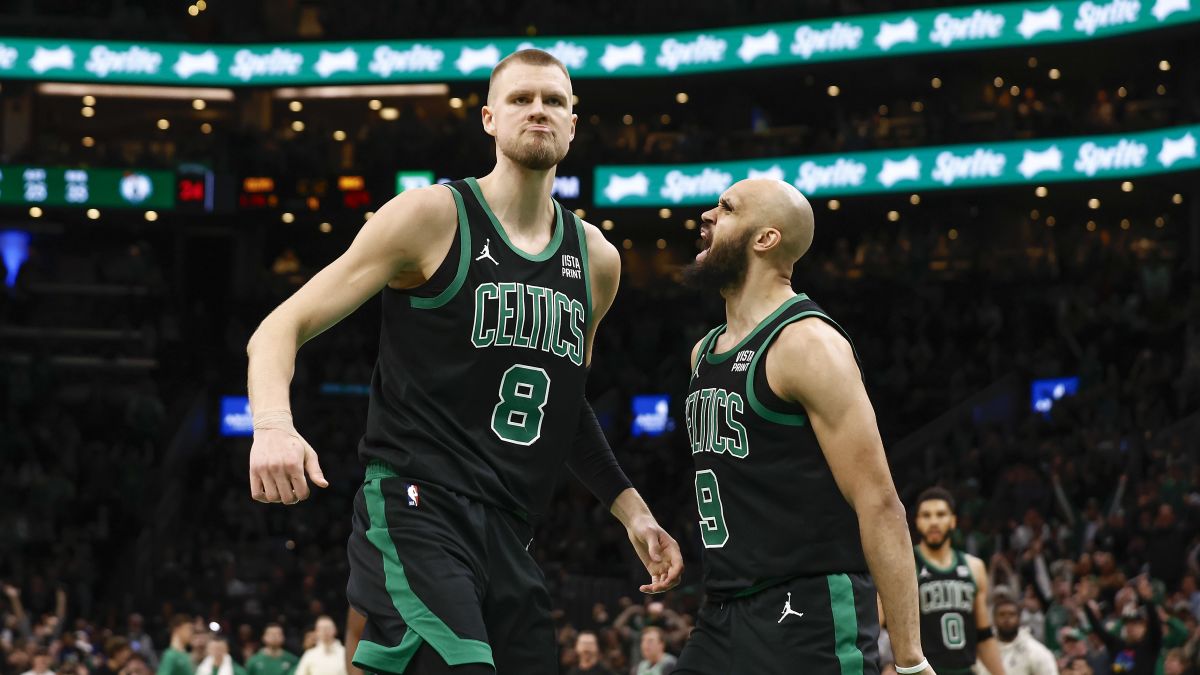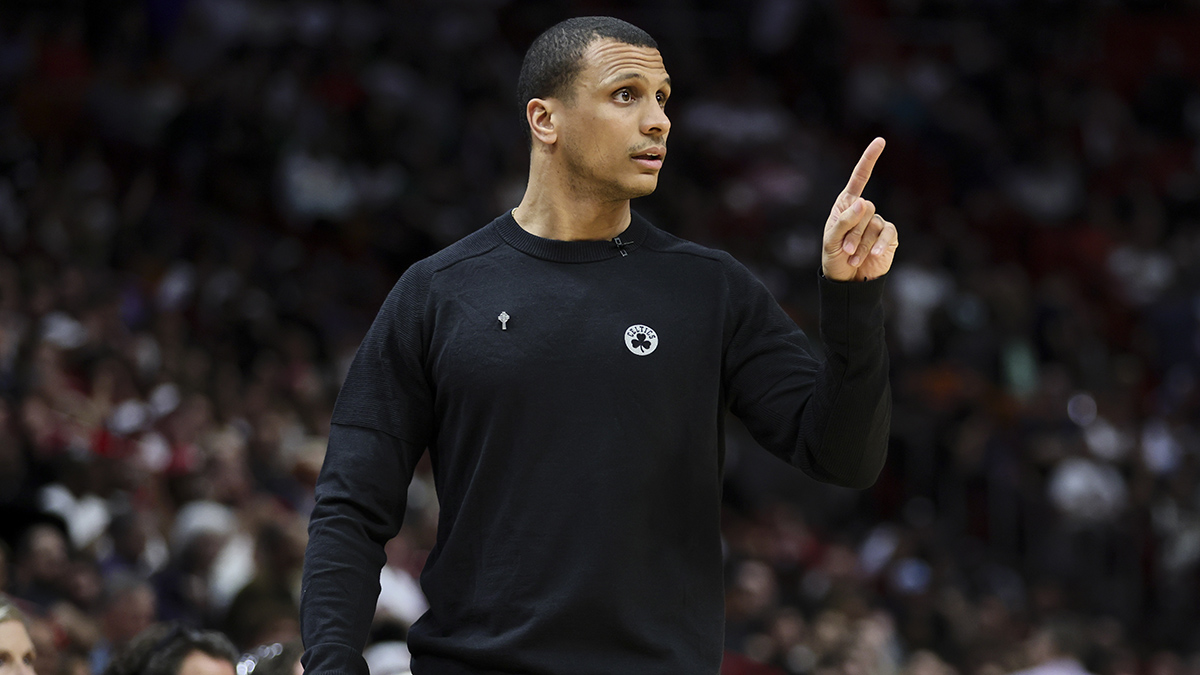The hat hangs in the back hall alongside a dozen others, faded but still surprisingly green. I don't wear it much anymore, but I've never considered tossing it, either. It has survived nearly 35 years of moves, from middle school to high school to college to apartments and finally a house.
I see it every day coming and going, and it invariably sparks the same visceral sadness and the same thought: don't do drugs.
That's an admittedly strange thing to think when looking at a Celtics hat, but this isn't any Celtics hat.
It is my Len Bias hat, and 33 years ago today, it transformed from a symbol of hope and possibility into a talisman of unspeakable sadness and tragedy.
For Celtics fans of a certain age, the image is seared into our memories, because it turns out it's all we would get. In a series of stills from the 1986 NBA draft, a smiling Bias poses in a cream pinstriped suit with a marbled skinny tie and matching pocket square whimsically designed like something that might waft from a saxophone in an '80s mural. In one photo, he smiles with commissioner David Stern. In another, he gazes at a Celtics placard.
Perched atop his head is a brilliantly green hat with the words "Boston" stenciled in a thin, plain font, and "Celtics" scrawled in an ostentatious cursive resembling an autograph. With the hat perched atop his head rather than pulled low over his eyes, Bias looks unwilling quite to embrace or believe his good fortune: he had just been made the No. 2 overall pick by the defending champions, days after they had beaten the Rockets for the third championship of the Larry Bird Era.
Boston Celtics
The dynasty, it turns out, was dying, and the Celtics wouldn't win another title for more than 20 years. But for two days that June, it felt like the good times might roll forever.
Bias was that good, a wildly athletic 6-foot-9 scorer out of Maryland who had dueled Michael Jordan to a standstill in college and was probably 25 years ahead of his time. Bias would've excelled in today's positionless NBA, with a devastating mid-range game (that used to be a thing, I swear), and the explosive ability to finish over anyone. He was James Worthy in Dennis Rodman's body, and Duke's Mike Krzyzewski once told the Globe's Bob Ryan that the two best opposing players he's ever seen are Jordan and Bias.
Jordan had just exploded with a 63-point game against the Celtics, but for 48 hours that spring, Celtics fans believed they had drafted his equal.
You needn't have been standing at the bus stop in your Len Bias hat that morning 33 years ago like me when a friend relayed the devastating news to recognize the impact of his death on the Celtics. But all these years later, what's hard to understand unless you were there is how profoundly we felt that loss, which Bird called, "the cruelest thing I've ever heard."
Each detail that emerged about Bias's final hours made us want to stop time and undo any one of about 20 bad decisions, as if reading and re-reading the details would allow us to spot the moment when he could retroactively be saved.
But in the end, the only detail that mattered was this: Len Bias used cocaine, and it stopped his heart. The first reports suggested he had smoked crack, an insidious form of the drug that was being used to demonize the inner city and would lead to harsh and nightmarish sentencing laws in the wake of Bias's death.
It turns out he had merely spent three hours snorting coke like so many Wall Street frat boys or Hollywood hedonists before and after, but the connections some of us made in our 13-year-old minds were unbreakable and permanent: cocaine will kill you.
I almost threw away my Len Bias hat the next day. The sight of it made me sick and three decades later, I still feel those pangs. The years have dulled my memory, but I believe the NBA discontinued the distinctive cursive caps almost immediately. The association with Bias was simply too strong for the NBA, which was about to transition from Bird and Magic to the iconic Jordan years. In 1988, Nike would introduce the Air Jordan logo and the league would soar.
I never did toss the hat. I wore it throughout high school and college, and I still occasionally wear it today. There are Facebook photos of me wearing it in 1988 and 1995, and I've donned it least once in every one of the last 33 years. I'm wearing it now as I type.
As sports fans, we experience the highest of highs through the success of our teams. We feel those connections most intensely in our formative years, which is why nothing will ever top the brilliance of the 1986 Celtics for me, and this is coming from someone who was on the field moments after the Red Sox ended the Curse in 2004.
But the losses sting just as severely and can leave an even more lasting impression. For me, that meant Magic's baby hook, Marvin Hagler losing to Sugar Ray, and of course, one strike away in 1986. Bruins fans know this feeling today.
No loss has proven more enduring, however, than Bias. I'm 46 now, and every time I look at that hat, I feel the same pangs of sorrow that wracked me at 13. What if Bias had survived? How much longer might Bird have played? Would the Celtics still have been able to land unheralded future All-Star Reggie Lewis? Would Bias's brush with death have scared Lewis straight before a similar tragedy befell him? Would Celtics-Bulls have become the most dominant rivalry in sports? How many banners might Bias have hung? What kind of life might he lived? What kind of Celtics legend might he be?
No two words haunt us more than, "What if?" and for my generation, anyway, Bias embodies the existential despair of that question like no one else.
Those thoughts and so many more flash every time I look at that hat, weathered and faded, hanging by my back door.
So why keep it?
Because some things are worth holding on to.
Click here to download the new MyTeams App by NBC Sports! Receive comprehensive coverage of your teams and stream the Celtics easily on your device.





